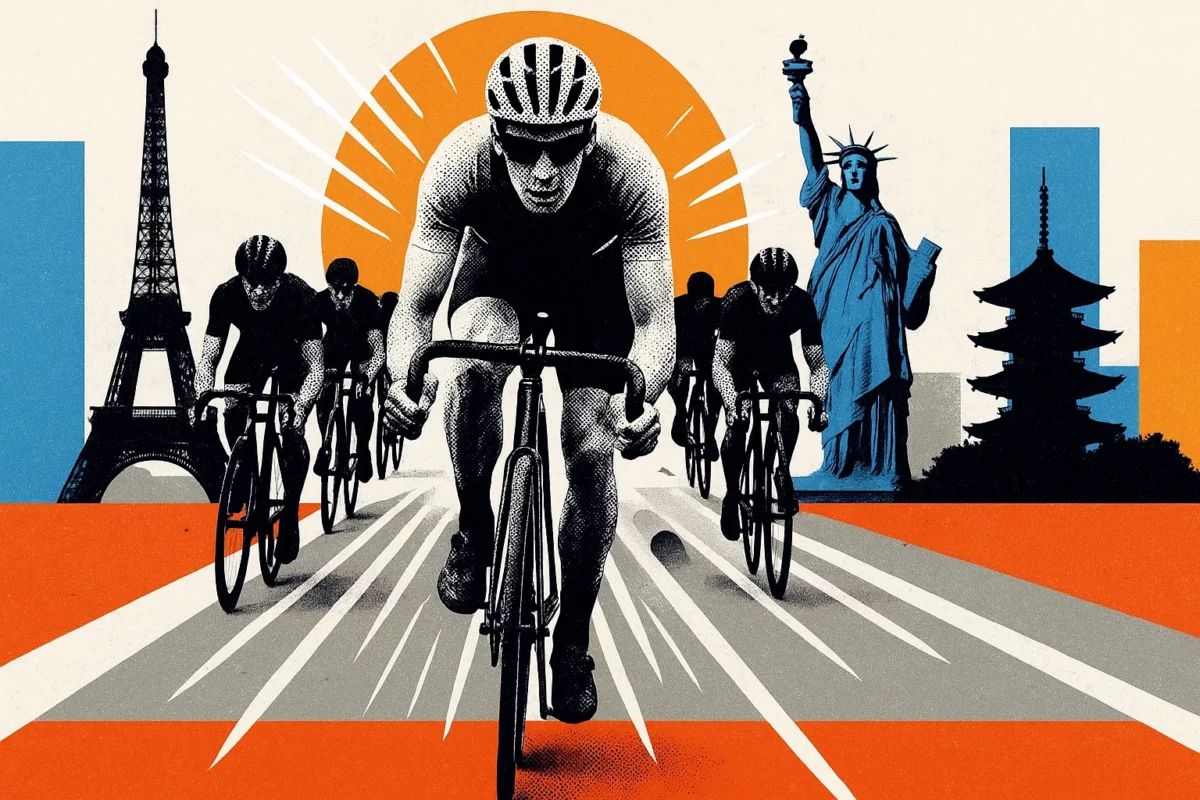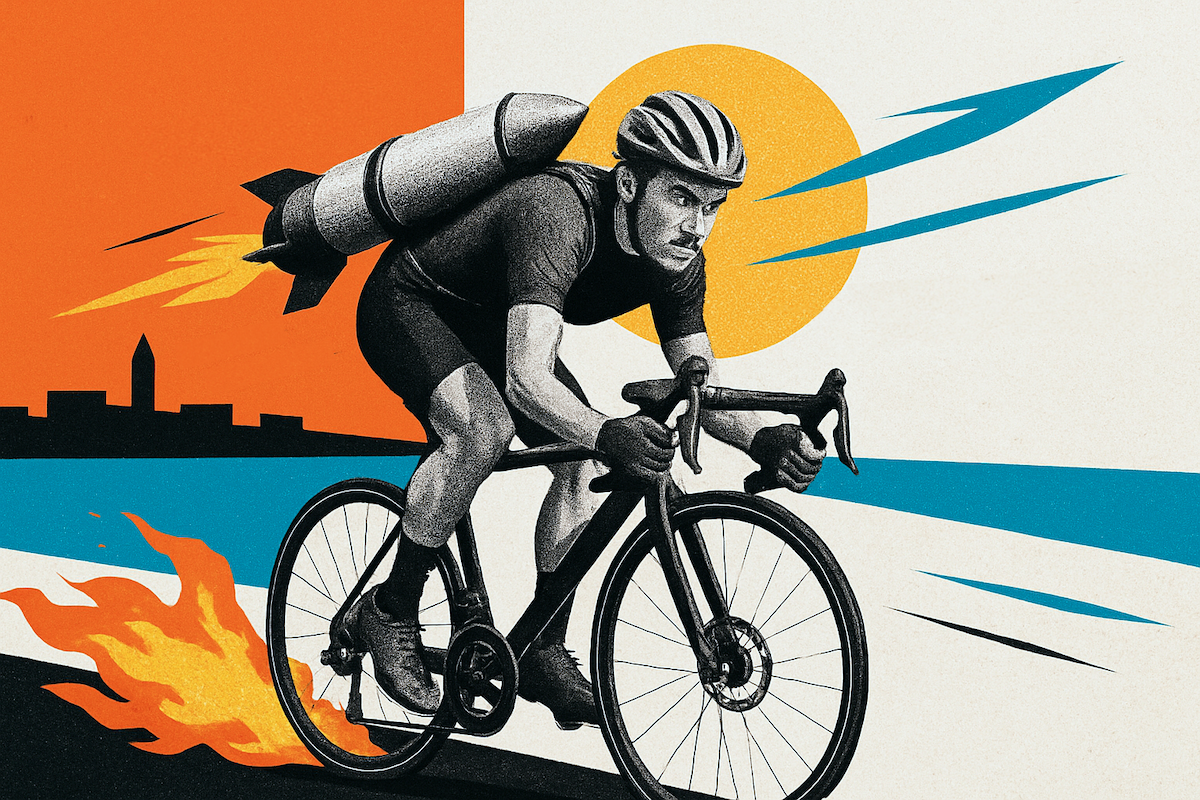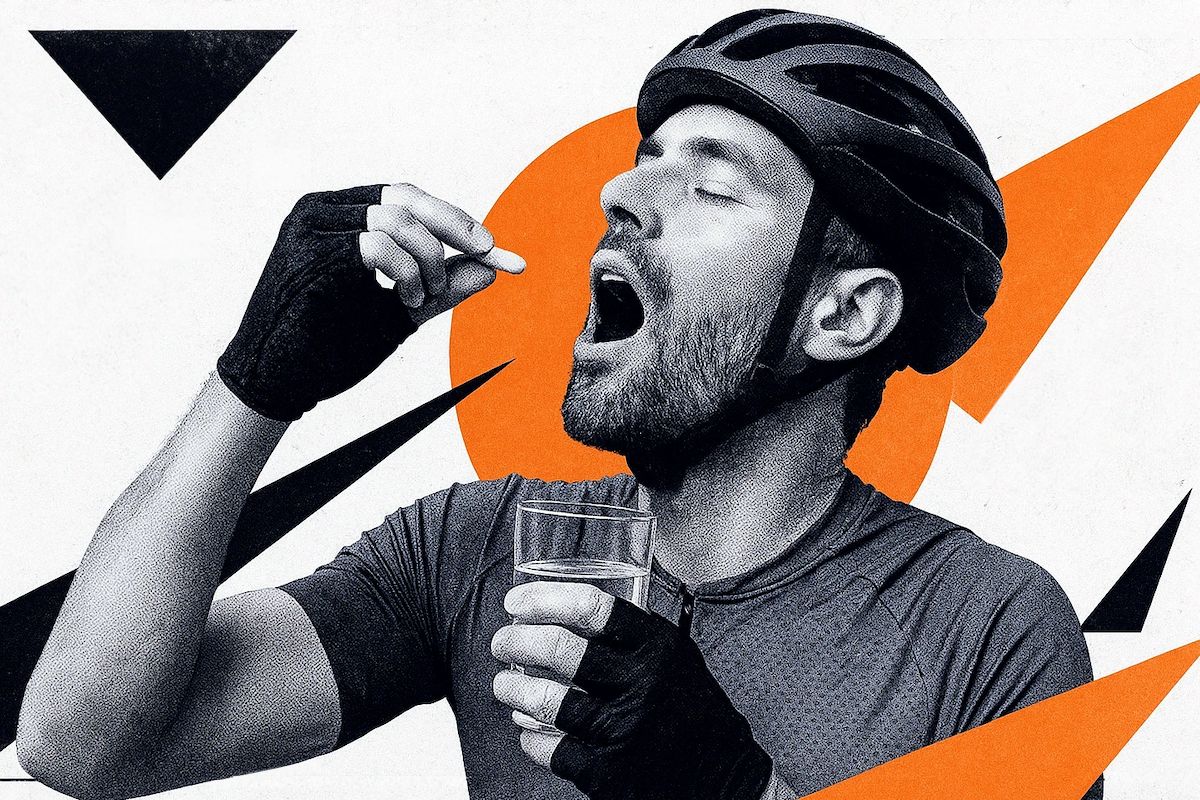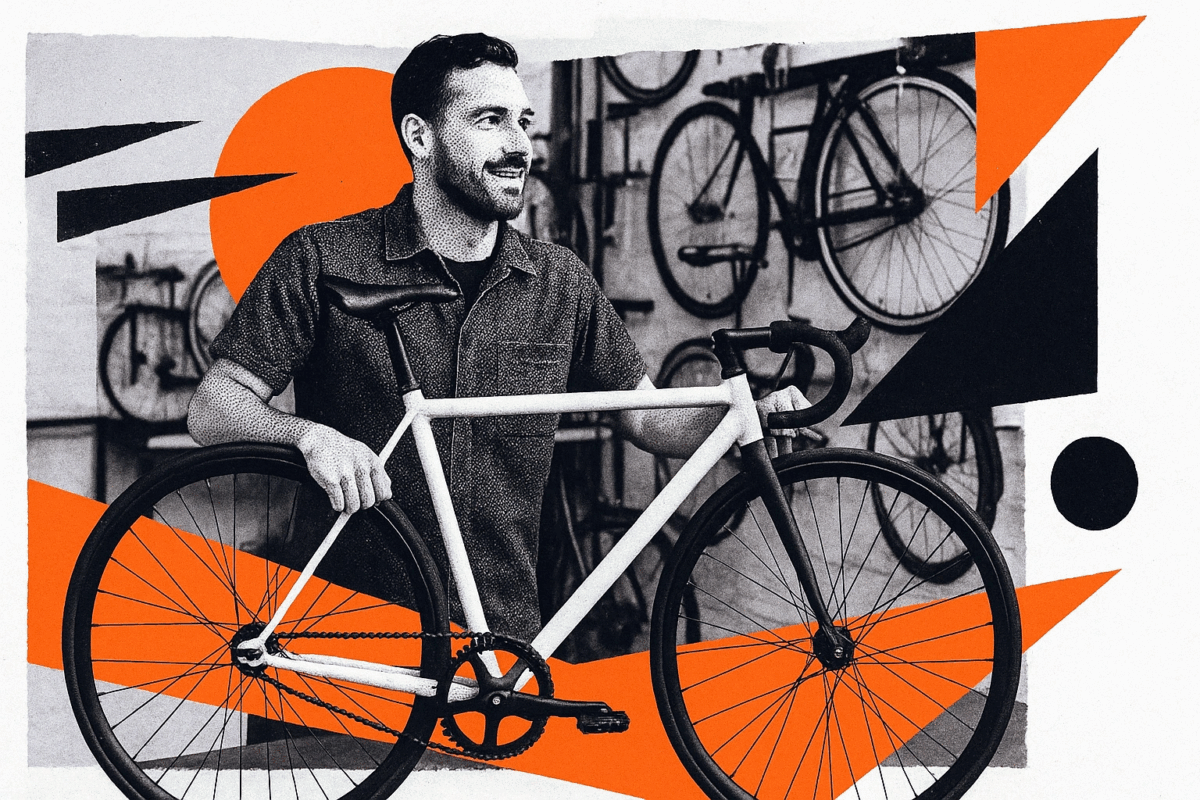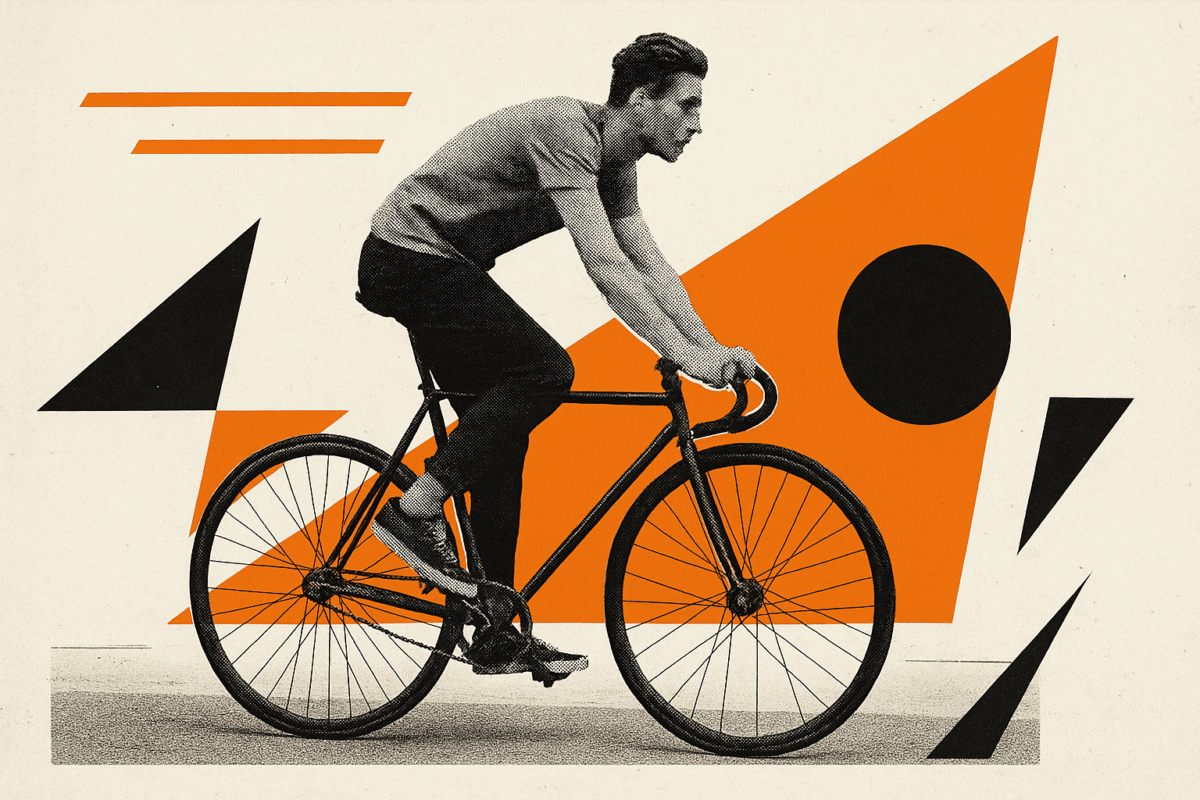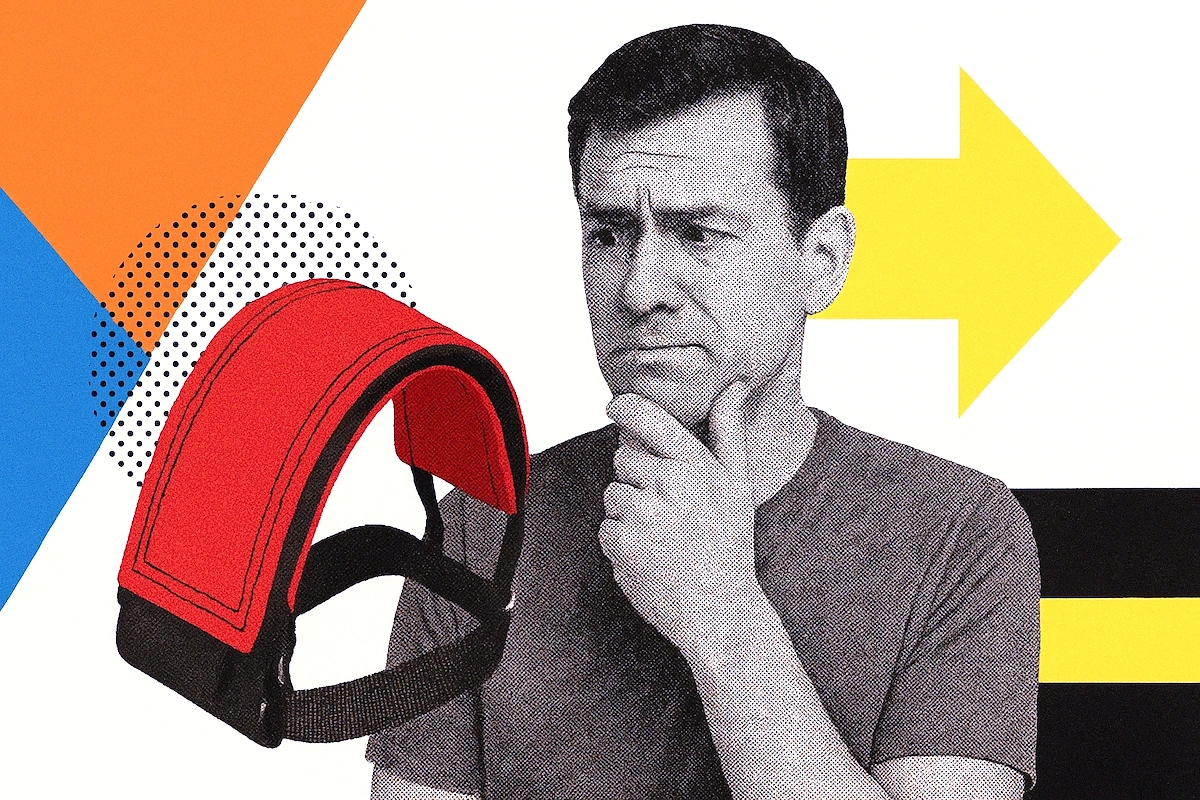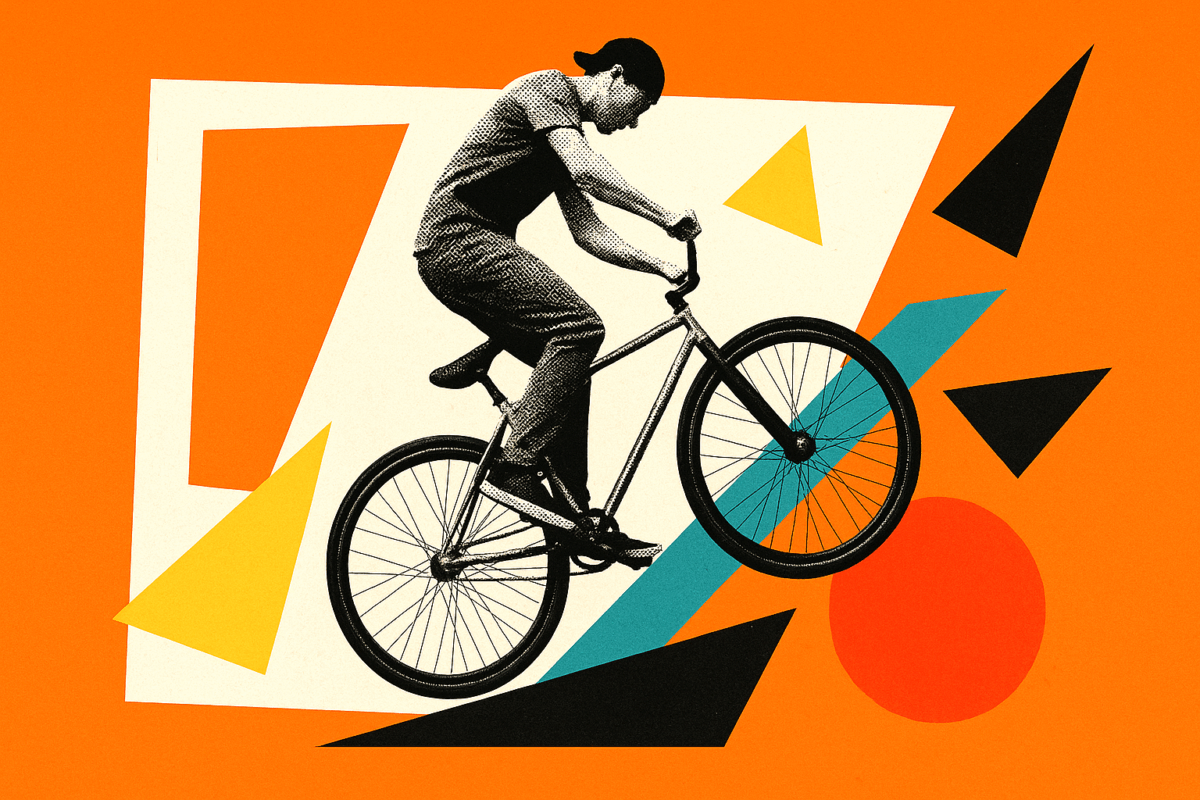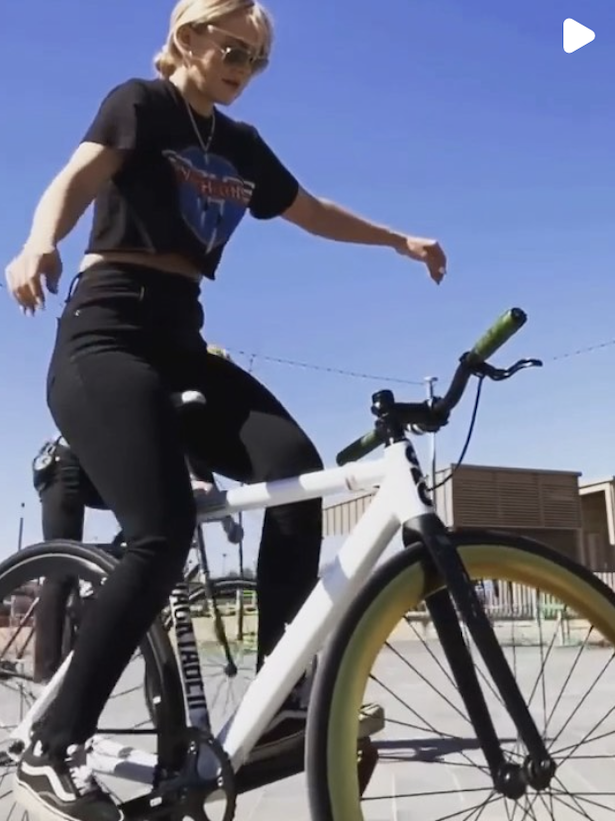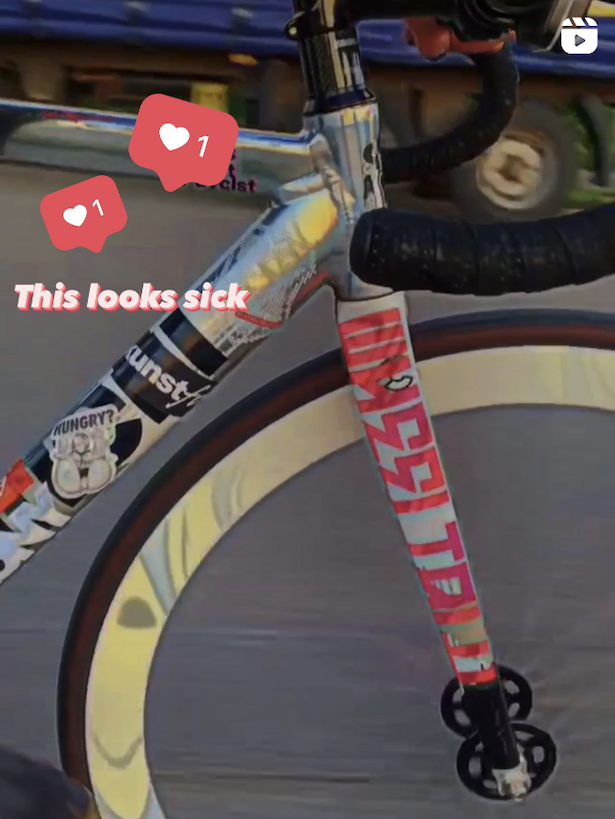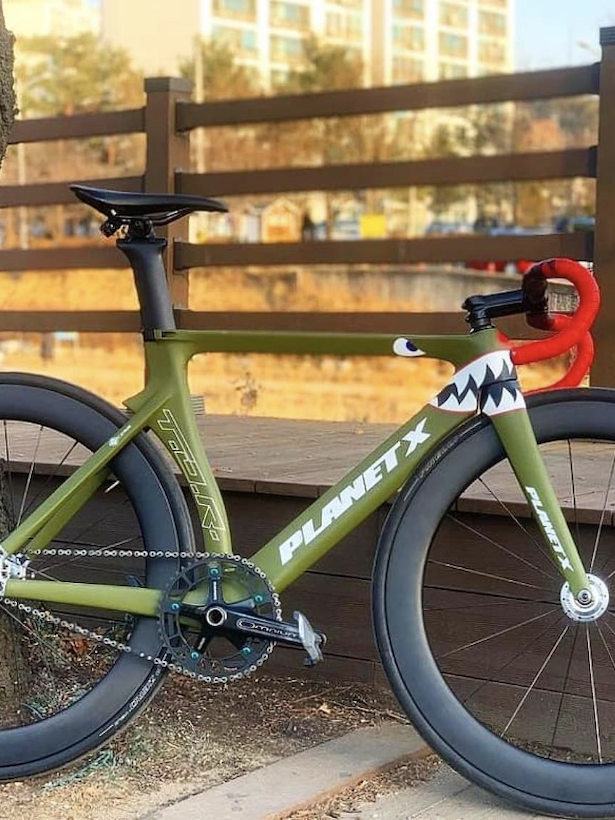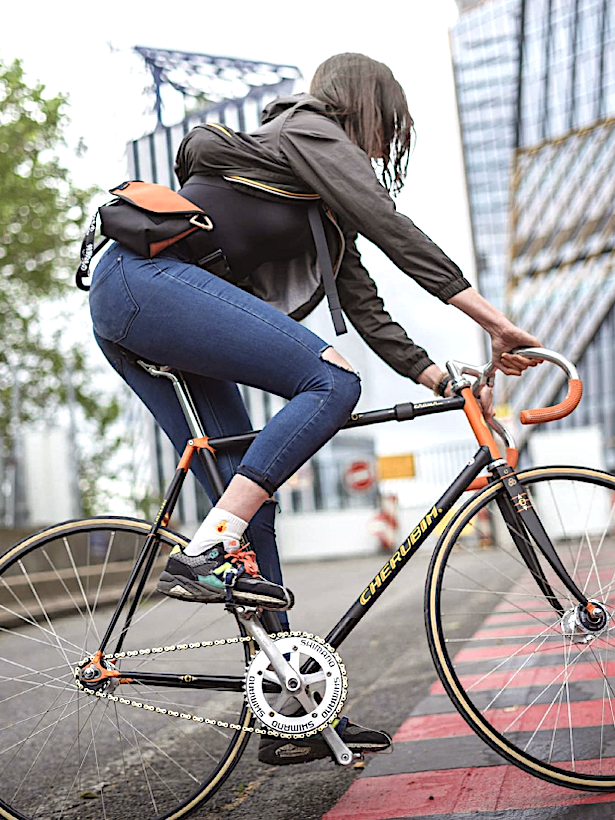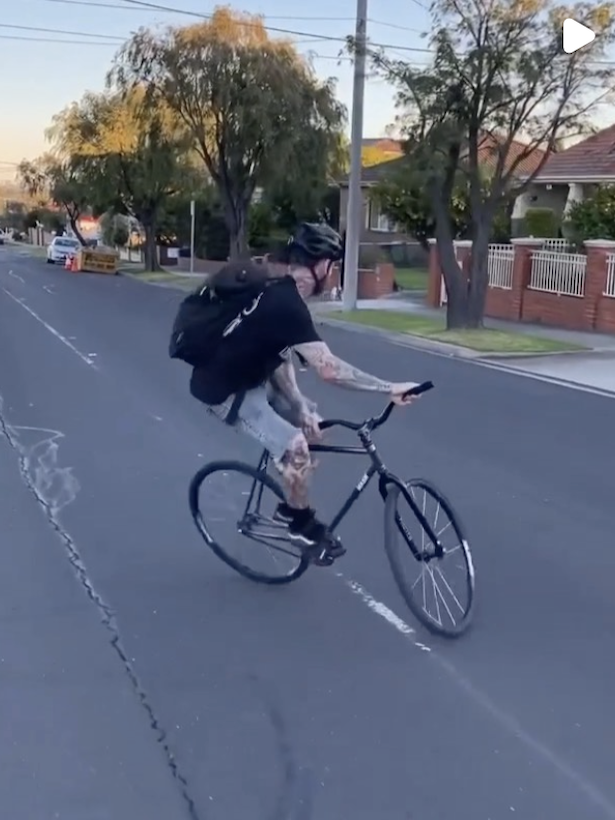
Key Takeaways
- Backpedaling is when you put pressure on the pedals backward to decelerate quickly
- Resistance braking means applying backward pressure to forward pedal motion without locking the wheel—it’s speed control, not reversal
- Master resistance first before attempting skid stops or riding brakeless—your quads will be screaming for two weeks while building the strength
- Keep a front brake while learning regardless of local laws—your stopping power is significantly better and safer until you nail the technique
If you try to backpedal on a fixed gear bike the way you do on a BMX, you’re gonna have a bad time. 🚴💀 Your legs will get yanked around by the cranks, and you’ll probably crash before you understand what went wrong.
Here’s what backpedaling actually means on a fixie—and it’s not what you think. We’re breaking down the difference between reversing your pedals (impossible while moving forward) and the resistance technique that actually controls your speed.
This fundamental concept is the difference between smooth stops and eating pavement. Get it right and you’ll master skid stops, track stands, and that direct connection everyone talks about. 💡
The big misconception—what everyone thinks “backpedaling” means
Here’s where the confusion starts: There are two types of bikes where people think about pedaling backwards, and they work completely differently.
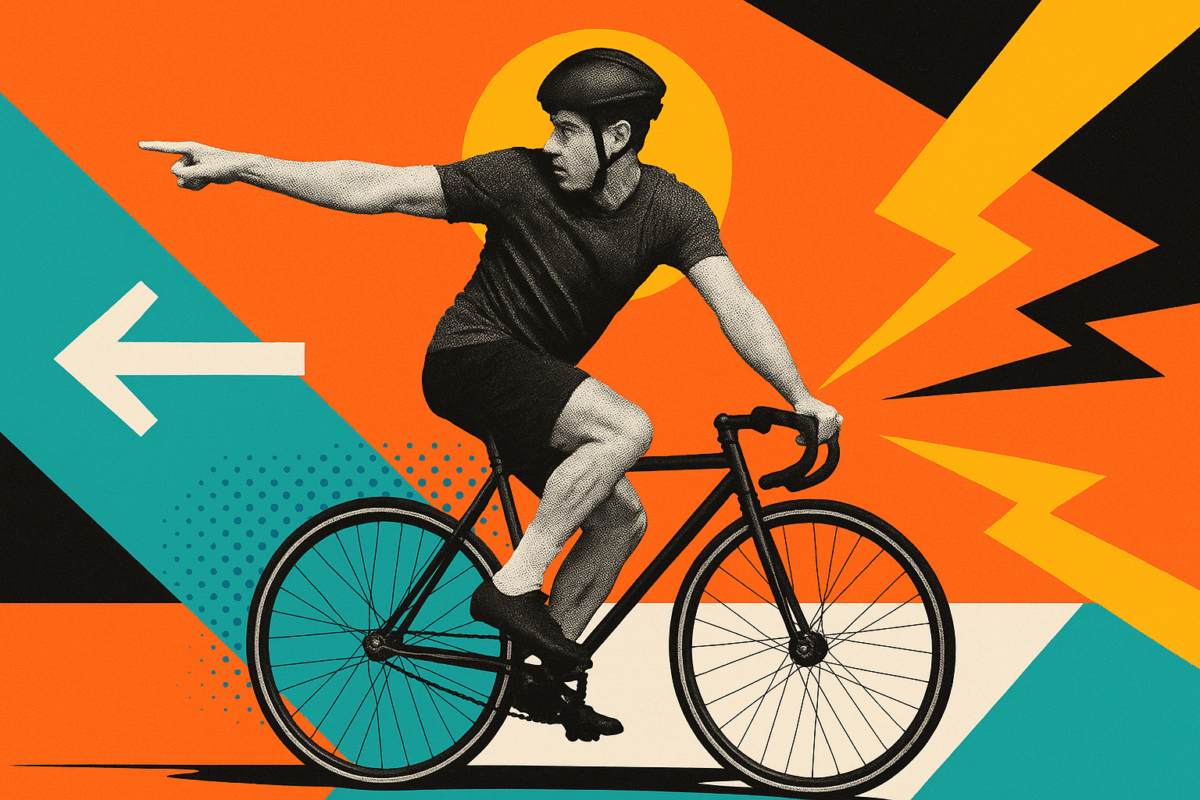
Coaster brake bikes (kids’ bikes, beach cruisers) have an internal brake mechanism. When you pedal backwards, the brake actually engages and stops the bike. Coaster brakes have been popular for over 100 years—you reverse the pedals, internal brake shoes engage, bike slows down. This is real backpedaling.
Regular freewheel bikes (most adult bikes) let you pedal backwards, but nothing happens. The pedals just spin freely because of the freewheel mechanism. The bike keeps coasting. Backpedaling on these bikes is pointless.
So when someone who learned on a coaster brake bike hears “backpedaling” mentioned for fixed gear, they assume it means the same thing—pedal backwards to stop. That mental model is completely wrong for fixed gear bikes.
On a fixed gear, you can’t pedal backwards at all while moving forward. The mechanism is fundamentally different. The pedals are locked directly to the wheel—if the wheel is spinning forward, the pedals are spinning forward. Period.
Fixed gear mechanics 101—why your pedals won’t stop moving
The fundamental difference is direct mechanical connection. On a fixed gear, the drive sprocket is threaded directly to the hub, so your pedals are directly coupled to the wheel. When the wheel turns, the pedals turn. Always.
You cannot coast on a fixed gear bike. If you’re going down a hill, you cannot stop pedaling—as the wheel speeds up from gravity, it forces your pedals to spin faster. Your legs have to keep up.
The chain is always engaged with zero slack and zero free movement. If the wheel spins forward, pedals spin forward. If the wheel rolls backward, pedals spin backward. The physics is inescapable.
The threading detail matters: The cog is wound onto threads so when you pedal forward you’re tightening the screw. When you apply backward pressure, you’re trying to loosen it. That’s why fixed gear hubs use a lockring that threads counter-clockwise—it prevents the cog from unscrewing when you brake.
What about coaster brakes—why can those reverse?
Coaster brakes work completely differently. They have an internal clutch mechanism that allows the pedals to move independently of the wheel—something fixed gears deliberately eliminate.
When you pedal forward, the clutch engages and drives the wheel. When you pedal backward, the clutch disengages and pushes brake shoes against the hub shell—creating friction. Fixed gear has no such mechanism. It’s pure mechanical coupling.
| Feature | Fixed Gear | Coaster Brake | Freewheel |
|---|---|---|---|
| Pedal/Wheel Connection | Direct, always engaged | Can disconnect via clutch | Ratcheting mechanism |
| Can You Coast? | No | Yes | Yes |
| Can You Reverse Pedals? | Only if wheel rolls backward | Yes, activates brake | Yes, independently |
| Braking Method | Leg resistance | Internal brake shoes | Hand brakes |
What “backpedaling” actually means in fixed gear talk
The truth: The term “backpedaling” is honestly misleading. Forum users will tell you they don’t even like the term since the pedals aren’t turning backward. They’re still moving forward, just slower because you’re fighting them.
What riders mean is resistance or applying backward pressure to forward pedal motion. You’re not reversing anything—you’re fighting the forward momentum to slow it down.
Your legs become variable-resistance brakes by opposing the natural forward rotation through the drivetrain. The harder you push back, the more you slow down.
Resistance vs skidding—there is a difference
Resistance (backpedaling) means applying backward pressure without locking the rear wheel. This is for speed modulation—slowing down gradually, controlling your pace on descents.
Skidding means applying enough backward force to completely lock the rear wheel and overcome tire traction. The wheel stops rotating and slides. This is your emergency brake.
Why skidding is less efficient: Sliding friction is lower than rolling friction—same reason modern cars have ABS. You actually stop faster with controlled resistance than a full skid.
How resistance braking actually controls your ride
Resistance braking has four main applications that every fixed gear rider uses constantly.
Speed modulation—your variable brake system
Going downhill requires constant light resistance to prevent over-acceleration. You cannot stop pedaling on descents—as the wheel speeds up, it forces your pedals to spin faster.
The technique: Use your legs as “dead weight” on the pedals. Let them follow the natural motion but add resistance pressure to control the rate.
You’ll develop a feel for how much pressure equals how much braking. Light touch for gentle speed checks, heavier resistance for steeper descents.
The skid stop connection—maximum resistance
Skid stopping requires shifting your weight forward off the saddle and locking the back wheel by resisting the pedals’ motion with maximum force, and learning to skid stop properly takes practice in safe environments first.
The critical limitation: If you don’t set the pedals at 3 and 9 o’clock and lock them, they’re still turning against your force. They’ll pass the dead zones at 6 and 12 where you have minimal leverage.
Track stands—micro-adjustments of pressure
Track stands use tiny forward and backward pressure adjustments to maintain balance while stationary. Fixed gear riders can alternate between pedaling slightly forwards and slightly backwards, and mastering track stands typically takes just a few weeks of daily practice.
The ability to apply backward pressure creates that rocking motion that keeps you balanced. Forum users report that “track standing becomes stupid easy and just clicks after practicing daily.”
Your first ride—what to expect
Be honest: You pretty much have to learn to ride a bike again. The experience is fundamentally different from anything you’ve ridden before.
Week 1—getting used to constant pedal motion
One new rider described their first fixed gear experience: “My first short ride was disappointing. I fell over to the side several times at almost zero speed.”
That’s completely normal. Experienced riders warn you’ll probably try to stop for a rest and experience hopefully no more than a brief unexpected skid. It takes 2 or 3 rides for the “don’t coast” thing to become second nature.
What to practice: Just ride in an empty parking lot. Focus on remembering you can’t coast. That’s it.
⚠️ Warning
Do NOT try to stop the pedals completely at speed or attempt to coast on your first ride. The forward momentum will keep your pedals moving even when you think you can hold firm. This force has been known to throw riders off their bikes. Multiple forum users mention this exact scenario as their most painful learning experience.
Weeks 2-3—learning light resistance
Practice gentle backward pressure while riding straight lines. You’re building the specific muscle memory needed for control.
The reality: Your quads will be screaming for the first two weeks. This is normal. You’re doing eccentric leg exercises for miles at a time.
Focus on feeling the connection between leg pressure and speed change. Start with barely-there resistance and gradually increase. Think “feather touch” at first.
Dos and don’ts
✓ Do This
- Practice resistance in a safe, empty parking lot
- Keep a front brake installed while learning
- Build leg strength gradually over weeks
- Start on flat ground before attempting hills
- Accept that your quads will hurt—it’s normal
✗ Don’t Do This
- Try to stop the pedals completely at speed
- Attempt to coast on your first ride
- Lock up the rear wheel unexpectedly in traffic
- Ride brakeless until you’ve mastered resistance
- Rush the learning curve—injuries happen here
The legal reality—do you need actual brakes?
Most states require “a brake or brakes” that can stop within 15-25 feet from 10 mph on dry pavement. But most laws don’t define what a “brake” is.
The District of Columbia is the exception: “A fixed gear bicycle is not required to have a separate brake, but an operator must be able to stop the bicycle using the pedals.”
California requires “a brake that allows operator to execute a one-braked-wheel skid on dry pavement.” A fixed gear can do this through resistance. But good luck convincing a cop of that.
The 2006 Portland case sparked major legal debate when fixie riders got ticketed for riding brakeless. Different judges had different opinions. The Legislature never clarified it.
Internationally: The UK requires two brakes (fixed hub counts as rear, but you still need a caliper on front). Germany will confiscate brakeless bikes. Laws vary wildly.
ℹ️ Real Talk
Regardless of what’s legal in your area, running at least a front brake while learning is just smart. You can remove it later, but master resistance braking first. The streets don’t care about your style points.
Frequently asked questions (FAQ)
No. Backpedaling (resistance) is applying backward pressure without locking the wheel—used for speed control. Skidding is applying enough pressure to completely lock the rear wheel. One is gradual, the other is binary.
No—they’re incompatible mechanisms. Coaster brakes require a freewheel to work. Fixed gear bikes have the cog directly threaded to the hub with no internal brake capability.
Yes, by necessity. If you’re riding fixed gear, you’re using resistance braking whether you realize it or not. The question is whether you use it skillfully or just let the pedals drag your legs around.
On the velodrome, you never want to coast—constant power is faster. The direct connection provides immediate power transfer and better control. Plus track bikes don’t have brakes because everyone moves in the same direction at similar speeds.
Basic competence takes 2-3 rides to feel natural. Confident speed control: 2-3 weeks of regular riding. Mastery for emergency situations and skid stops: 1-2 months of consistent practice.
Single speed bikes have one gear but use a freewheel—you can coast and pedal backward independently. Fixed gear bikes have the cog locked directly to the wheel—no coasting, pedals always move with the wheel. Learn more about understanding fixed gear versus single speed bikes.
Final Thoughts
The term “backpedaling” on a fixed gear is honestly misleading—you’re not reversing anything, you’re resisting forward motion. But this distinction is what separates riders who control their bikes from riders who get controlled by their bikes.
Get out to an empty parking lot and practice gentle resistance while rolling slowly. Build up the muscle memory before you worry about looking cool. The technique will click after a few weeks, and suddenly you’ll understand why people are obsessed with that direct connection.

